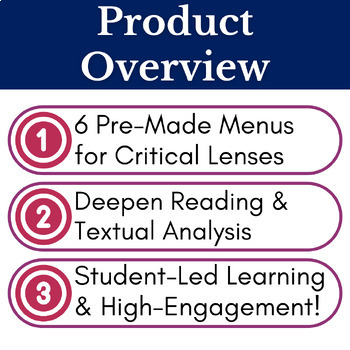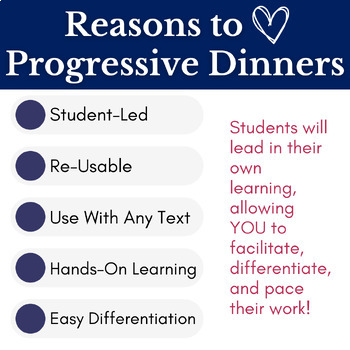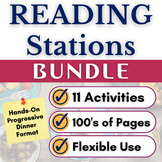Critical Lenses Reading Stations Literary Analysis Activity for Fiction Texts
- Zip
What educators are saying
Also included in
- Looking for high school reading comprehension passages and questions? Think outside the box with these interactive, engaging reading stations and writing stations activities! Students will read fiction, nonfiction, and poetry texts, engage in small group discussion, and revise any essay writing assPrice $48.65Original Price $69.50Save $20.85
Description
This fun critical lenses reading stations activity "progressive dinner" can be used to analyze any fiction text through 6 different literary lenses, including short stories, novels, and poetry! Students are asked to apply up to 6 critical lenses to a fiction text in a hands-on and interactive way!
Choose from 6 different critical lens menus, including Reader Response, Feminist, New Historicism, Formalist, Psychoanalytic, and Marxist. Choose the menus that work best with the text you're studying (or customize your own) and set up 2, 3, 4, or 6 different station rotations.
*******************************************************************************
Here’s what you’ll receive in this resource:
- Directions and Pacing Slideshow, Google Slides & PowerPoint Versions (one for use with paper plate handouts and one for use with actual paper plates). (5 Slides x Two Versions) so that you're able to give students clear expectations for this activity and keep pace along the way. Feel free to swap out timers for your own classroom use.
- Pre-Made Critical Lens Menus (6 Pages) + All-in-One Critical Lenses Handout (1 Page). These are NOT editable.
- Editable Critical Lens Menu Template (1 Google Slide) so that you can customize or add-in another critical lens of your choosing.
- Dinner Plate Handouts (4 Pages) so that you don't have to purchase/use paper plates. Handouts accommodate space for student notes focused on reading a text through 2, 3, 4, or 6 different lenses.
- Product Links & Teacher Notes (4 Pages) so that you have instructions and tips for using this assignment with students at your fingertips.
★ Teachers will need to provide the text(s), actual paper plates if desired, and set-up for the progressive dinner.
*******************************************************************************
This resource is helpful for:
★ Teachers who want maximum engagement in a student-led classroom.
★ Teachers who are looking to save time with ready-made resources.
★ Teachers who love to innovate and try new things!
*******************************************************************************
Let's Connect!
★ Stop by the Lindsay Ann Learning Blog!
*******************************************************************************
Copyright © 2019-Present, Lindsay Ann Learning
⇒ Permission for use by one teacher in his or her own classroom.
⇒ Not for public display or digital sharing.
⇒ If you intend to share with others, please purchase an additional license.






